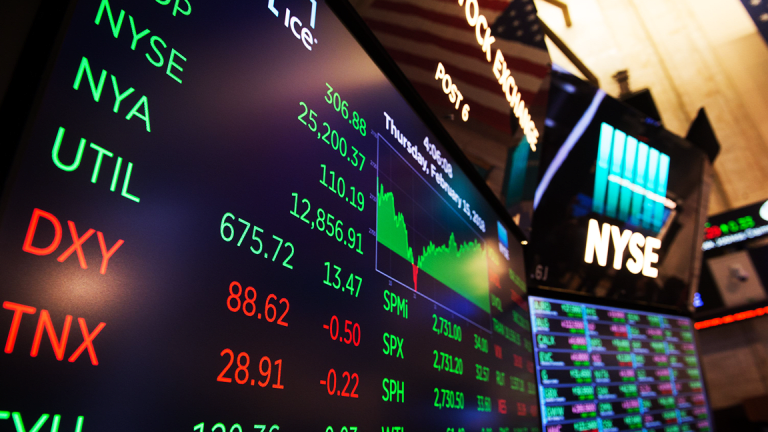Dow Jones Today Navigating the Markets

The Dow Jones Today Industrial Average is one of the most prominent benchmarks in the financial world. Known simply as the Dow, it acts as a bellwether for the overall health of the stock market and the economy. For investors and market enthusiasts alike, understanding the movements of the Dow Jones today can offer valuable insights into market trends and potential opportunities.
Tracking the Dow Jones today is more than just a matter of watching numbers rise and fall. It involves understanding the factors driving those changes, the broader market context, and what it all means for the future. Whether you’re a seasoned investor or someone just starting to dip their toes into the financial world, keeping tabs on the Dow can help you make informed decisions.
What Is the Dow Jones Industrial Average?
The Dow Jones Industrial Average, often referred to as the Dow, is a stock market index that tracks 30 large, publicly traded companies in the United States. These companies represent a diverse array of industries, from technology and healthcare to finance and consumer goods. By focusing on a select group of influential companies, the Dow offers a snapshot of the market’s overall direction.
Unlike some other indices, which weigh stocks by market capitalization, the Dow is price-weighted. This means that companies with higher stock prices have a greater influence on the index’s movements. While this methodology has its critics, it’s one of the reasons the Dow remains a distinct and widely followed index.
The importance of the Dow lies in its ability to simplify the complexities of the market. For many, it serves as a shorthand for the stock market’s performance. When analysts and news outlets report on the Dow Jones today, they’re essentially providing a snapshot of the broader economic sentiment.

Why the Dow Jones Today Matters
Understanding the Dow Jones today is crucial because it often reflects investor confidence and market trends. A rising Dow typically signals optimism, suggesting that companies are performing well and that the economy is on solid footing. Conversely, a declining Dow can indicate concerns about economic challenges or global uncertainties.
For individual investors, tracking the Dow can serve as a guide for making investment decisions. It provides a sense of how the market is reacting to major news events, earnings reports, and economic data. Whether you’re holding long-term investments or considering short-term trades, the Dow’s movements can help inform your strategy.
The Dow’s influence extends beyond the stock market. Its performance can affect everything from consumer confidence to business investment decisions. For example, a strong Dow may encourage companies to expand, hire more workers, or invest in new projects. On the flip side, a struggling Dow might lead to caution and cutbacks.
Factors That Influence the Dow Jones Today
Several factors can influence the performance of the Dow Jones on any given day. These include economic data, corporate earnings, geopolitical events, and changes in interest rates. Understanding these drivers is essential for interpreting the Dow’s movements and their implications.
Economic data, such as employment reports, inflation figures, and GDP growth, can have a significant impact on the Dow. Positive data often boosts investor confidence, leading to gains in the index. Conversely, negative data can trigger sell-offs as investors reassess their outlook.
Corporate earnings are another key driver of the Dow. When companies report strong earnings, their stock prices often rise, lifting the index. On the other hand, disappointing earnings can drag down the index, particularly if they come from a company with significant influence on the Dow’s price-weighted structure.
Geopolitical events, such as trade negotiations or conflicts, can also sway the Dow. Uncertainty in global markets often leads to volatility in the index. Similarly, changes in interest rates, driven by Federal Reserve policies, can affect investor sentiment and, by extension, the Dow’s performance.
How to Analyze the Dow Jones Today
Analyzing the Dow Jones today involves looking beyond the headline number to understand the underlying trends and drivers. One useful approach is to examine the performance of individual components within the index. This can provide insights into which sectors are leading or lagging and why.
For example, if technology stocks are driving the Dow higher, it may indicate optimism about innovation and growth in that sector. Conversely, if industrial stocks are underperforming, it could reflect concerns about supply chain disruptions or slowing economic activity. By breaking down the index, you can gain a clearer picture of the market’s dynamics.
Another important aspect of analyzing the Dow is considering its movements in the context of broader market trends. Comparing the Dow to other indices, such as the S&P 500 or Nasdaq, can help identify whether its performance is aligned with or diverging from the broader market. This can provide additional clues about investor sentiment and economic conditions.
The Role of the Dow Jones Today in Investment Strategies
The Dow Jones today plays a vital role in shaping investment strategies for both individual and institutional investors. For long-term investors, the index serves as a benchmark for portfolio performance. Many mutual funds and ETFs aim to replicate or outperform the Dow, making it a key reference point for evaluating investment success.
For traders and short-term investors, the Dow’s movements can present opportunities for profit. By analyzing the index’s trends and identifying potential catalysts, traders can capitalize on market fluctuations. Whether through options, futures, or individual stock trades, the Dow provides a wealth of opportunities for active investors.
The Dow’s role as a barometer of economic health also makes it a valuable tool for macroeconomic analysis. By tracking the index alongside other economic indicators, investors can develop a more comprehensive understanding of the market environment and adjust their strategies accordingly.
The Dow Jones Today in a Global Context
While the Dow Jones is rooted in the U.S. market, its influence extends far beyond American borders. As one of the most widely followed indices in the world, the Dow often sets the tone for global markets. A strong performance in the Dow can boost confidence in international markets, while a sharp decline can trigger sell-offs around the globe.
The interconnectedness of global markets means that events affecting the Dow can have ripple effects worldwide. For example, U.S. economic data or Federal Reserve decisions can influence currency values, commodity prices, and international trade. Understanding the Dow’s role in this global context is essential for navigating today’s interconnected financial landscape.
The Dow’s international impact is also evident in the way foreign investors view it as a proxy for the U.S. economy. A rising Dow often signals strength in the American market, attracting investment from abroad. Conversely, a struggling Dow can lead to capital outflows and increased caution among global investors.
Challenges and Criticisms of the Dow Jones Today
Despite its prominence, the Dow Jones is not without its critics. Some argue that its price-weighted methodology is outdated and fails to accurately represent the market. By giving more weight to higher-priced stocks, the Dow can sometimes misrepresent the performance of the broader market.
Others point out that the Dow’s focus on just 30 companies makes it less comprehensive than indices like the S&P 500, which includes a much larger number of stocks. This limited scope can lead to discrepancies between the Dow’s movements and those of the broader market.
Additionally, the Dow’s composition has been criticized for not keeping pace with the changing economy. While the index has made efforts to include companies from diverse sectors, some argue that it still underrepresents key industries, such as technology and renewable energy.
Conclusion
The Dow Jones today remains a vital tool for understanding and navigating the financial markets. Despite its limitations, the index’s simplicity and prominence make it a valuable resource for investors, analysts, and everyday observers alike. By tracking the Dow and analyzing its movements, you can gain valuable insights into market trends and economic conditions.
Whether you’re using the Dow as a benchmark for your portfolio, a guide for short-term trading, or a window into the global economy, its importance cannot be overstated. As the market continues to evolve, the Dow’s enduring relevance ensures that it will remain a cornerstone of the financial world for years to come.





